This video, which was released in 2012, went viral and created quite a buzz. I stumbled upon it shortly after its release, back when my knowledge of space was much more limited. What puzzled me the most was the perpendicularity of the planets’ orbital plane to the direction of motion. It’s not that it’s impossible, but the solar system can actually move at any angle to the plane of the Galaxy. You might be wondering why I’m bringing up this long-forgotten story. Well, the truth is that right now, if you’re interested and the weather is clear, anyone can observe the actual angle between the ecliptic and the Galaxy’s plane in the sky.
Verify researchers
According to astronomy, the inclination between the ecliptic and the Galaxy’s planes measures 63°.
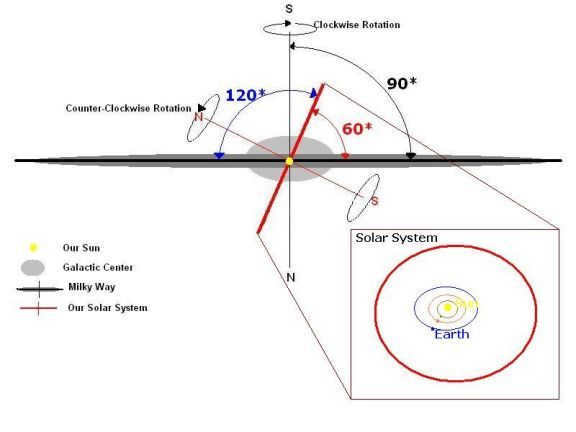
However, the actual shape is uninteresting, and now, as supporters of the flat Earth are gathering on the fringes of science, it is desirable to have a simple and clear representation. Let us contemplate how we can observe the planes of the Galaxy and the ecliptic in the sky, preferably with the unaided eye and not too far from urban areas? The plane of the Galaxy is known as the Milky Way, but currently, due to the excessive light pollution, it is not so straightforward to see. Is there a line that closely aligns with the plane of the Galaxy? Indeed, there is – it is the constellation of the Swan. It is easily visible even in urban settings, and it is simple to locate by using the bright stars Deneb (alpha Swan), Vega (alpha Lyra), and Altair (alpha Eagle). The “torso” of the Swan roughly corresponds to the galactic plane.
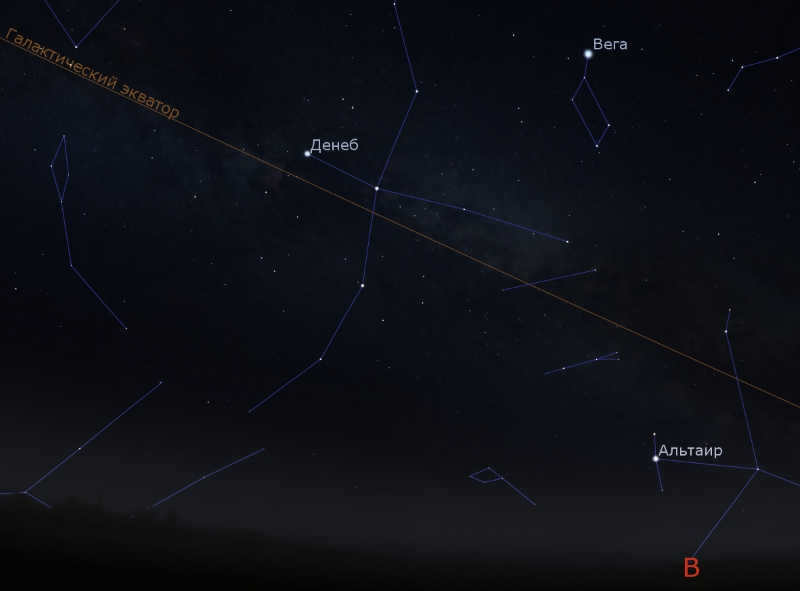
Alright, so we’ve got ourselves a single aircraft. But how can we establish a visual reference for the ecliptic? Let’s consider what the ecliptic represents in a broader sense. By strict definition, the ecliptic is the intersection of the celestial sphere and the orbital plane of the Earth-Moon barycenter (the center of mass). On average, the Sun moves along the ecliptic, but we don’t have two Suns to conveniently draw a line between, and the Swan constellation won’t be visible in broad daylight. However, if we keep in mind that the planets in our solar system also move in roughly the same plane, we can effectively use the planetary parade as a guide to the plane of the ecliptic. And at this very moment, we can observe Mars, Jupiter, and Saturn in the morning sky, perfectly positioned for our purpose.
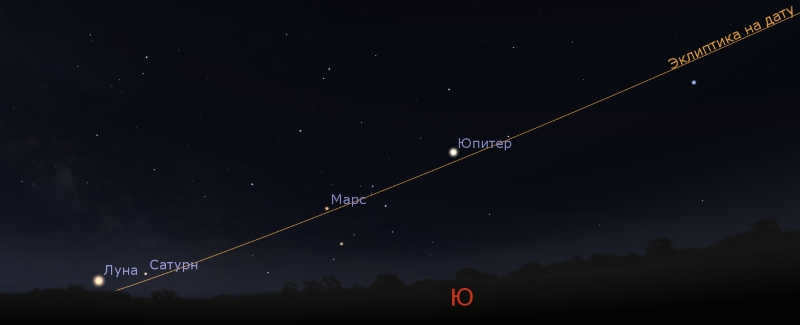
Consequently, over the next few weeks, during the early morning hours before the sun rises, you will have the opportunity to witness a captivating scene similar to the one depicted above.
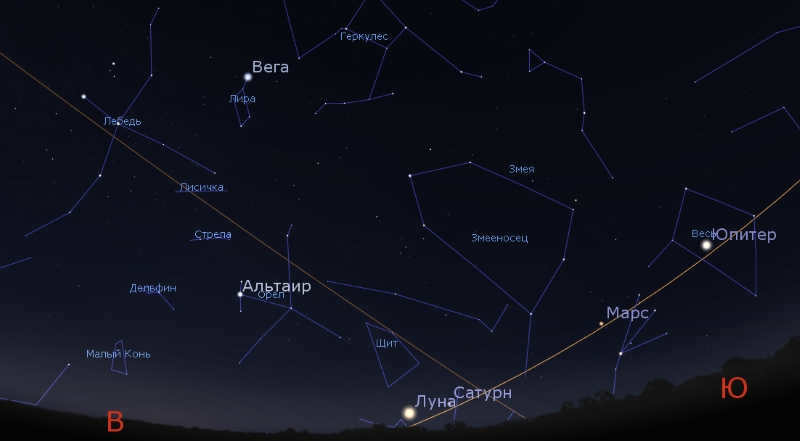
Surprisingly, this aligns precisely with the content found in astronomy textbooks.
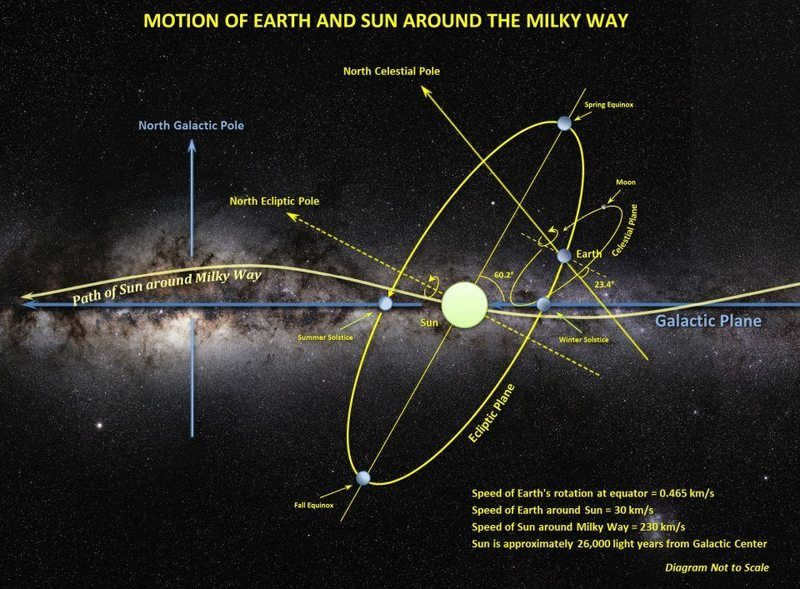
The correct representation of the gif is as follows:
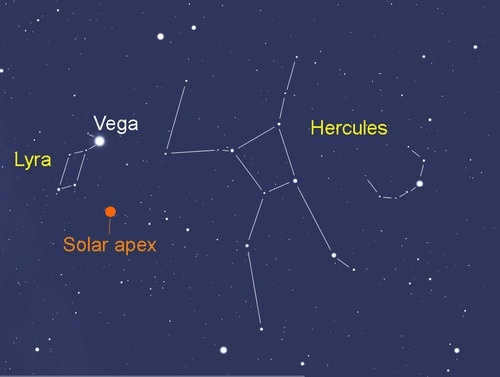
Unfortunately, this fact cannot be easily verified, as it relies on astronomical observations and mathematics conducted over the course of many years, despite being discovered two hundred and thirty-five years ago.
How can we determine the direction in which the solar system is moving in relation to nearby stars? By observing the movement of a star across the celestial sphere over a period of several decades, we can deduce the direction in which we are moving relative to that star. Let’s refer to the point towards which we are moving as the apex. Stars that are located near the apex, as well as those from the opposite point known as the anti-apex, will exhibit slight movement as they are either approaching or moving away from us. On the other hand, stars that are further away from the apex and anti-apex will have greater motion of their own. To put it in perspective, imagine driving down a road. The traffic lights at the intersections ahead and behind you won’t appear to move much sideways, but the lampposts along the road will flicker or have a significant movement outside the car window.
The animated image demonstrates the motion of Barnard’s star, which possesses the most significant proper motion. As early as the 18th century, astronomers possessed historical data on star positions spanning 40-50 years, enabling them to ascertain the direction of slower-moving stars. English astronomer William Herschel, for instance, utilized star catalogs and performed calculations without direct telescope observation. His initial calculations based on the Mayer catalog revealed that stars do not exhibit random motion, and it is indeed possible to establish their apex.
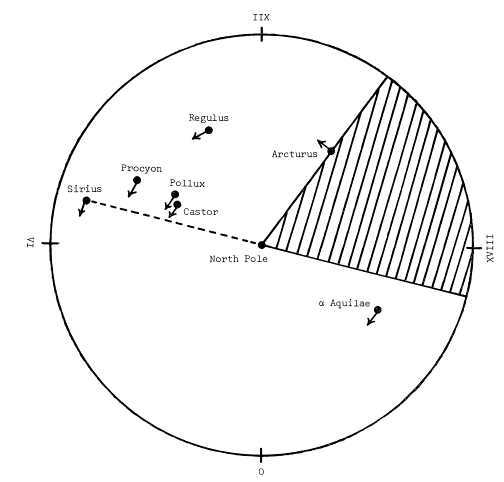
Original Source: Hoskin, M. Herschel’s Calculation of the Solar Apex, Journal for the History of Astronomy, Vol. 11, P. 153, 1980
Furthermore, the inclusion of the Lalande catalog information significantly decreased the size of the observed area.
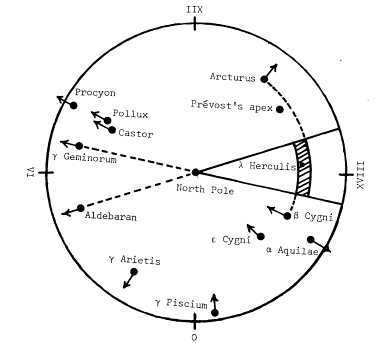
Further, the scientific work progressed by clarifying the data, conducting calculations, and engaging in debates. However, Herschel applied the correct principle and only erred by ten degrees. Ongoing research continues to gather information, as evidenced by the recent discovery that the speed of motion has decreased from 20 to 13 km/s over the past thirty years. It is important to note that this speed should not be confused with the velocity of the solar system and other nearby stars in relation to the galactic center, which measures approximately 220 km/s.
Regarding the velocity of movement in relation to the Galactic center, it is imperative to comprehend this concept. Similar to Earth, the galactic north pole is determined arbitrarily by convention. It is situated in close proximity to the star Arcturus (Alpha Volopas), which is roughly in the direction of the wing of the Swan constellation. Overall, the depiction of constellations on a Galaxy map appears as follows:
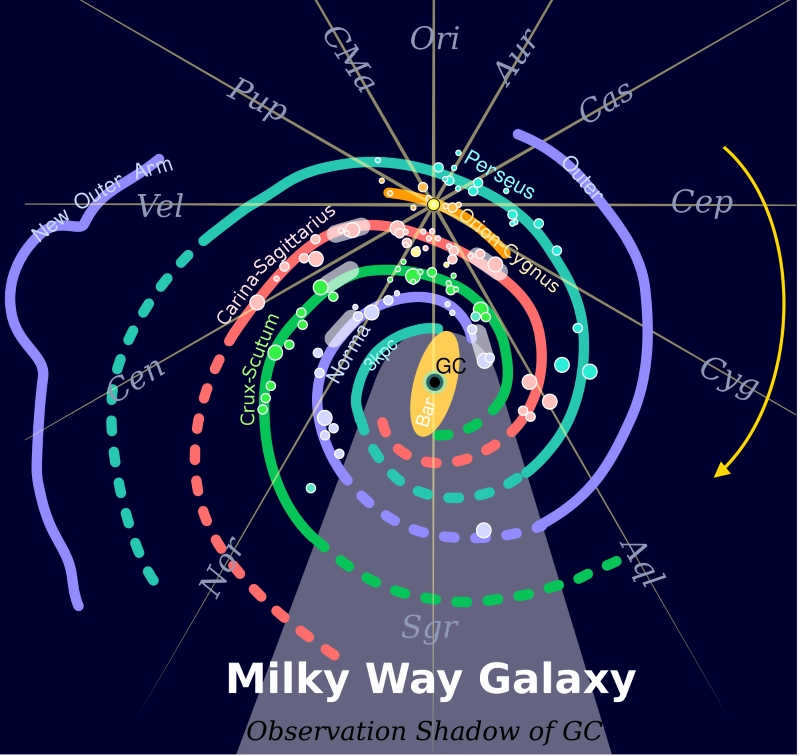
In other words, the Sun’s position in the Galaxy is not fixed. It is constantly moving in two different directions. First, it moves in the direction of the constellation Cygnus, which is towards the center of the Milky Way. Second, it moves in the direction of the constellation Hercules, which is perpendicular to the galactic plane. This movement is at an angle of 63 degrees to the galactic plane.
The cosmic comet
The video’s analogy of comparing the solar system to a comet is completely accurate. NASA’s IBEX mission was specifically created to study the interaction between the solar system’s boundary and interstellar space. And based on its findings, a cosmic tail does indeed exist.
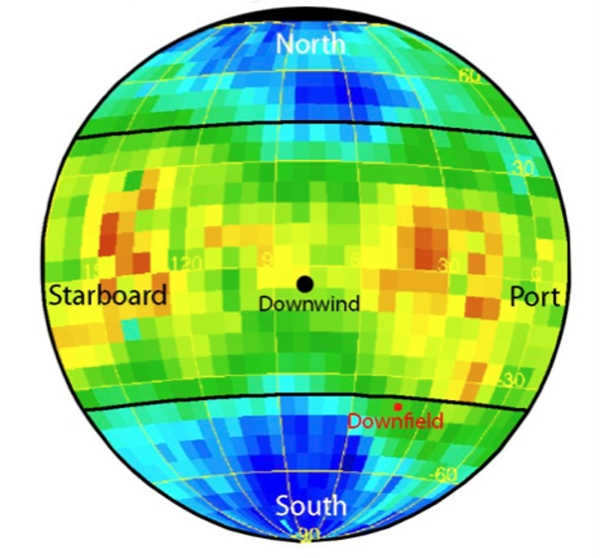
We have the ability to observe astrospheres (bubbles of stellar wind) directly for other stars.
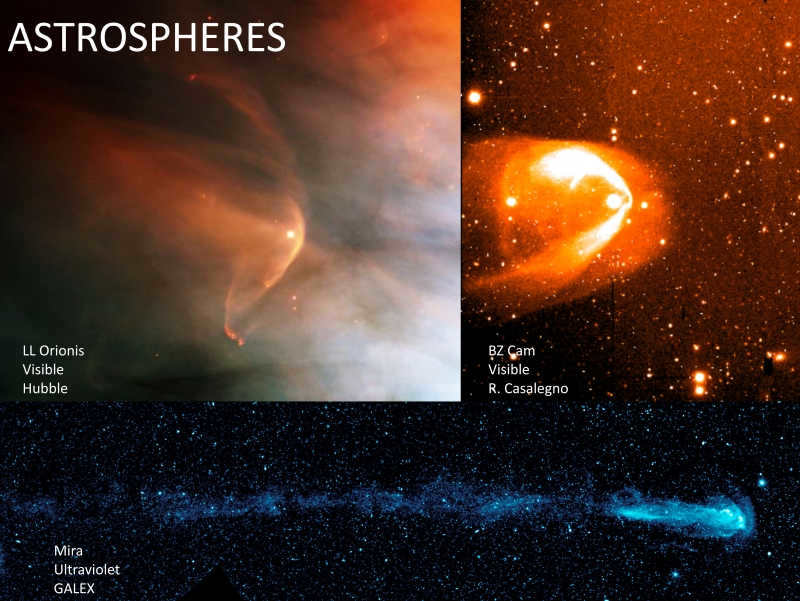
One final silver lining
To conclude the discussion, it is important to highlight an extremely positive development. DJSadhu, the creator of the original video in 2012, initially promoted something that lacked scientific basis. However, due to the widespread sharing of the clip, he had the opportunity to engage in conversations with actual astronomers (astrophysicist Rhys Tailor expresses great enthusiasm for the dialogue) and, three years later, he produced a new video that is much more aligned with scientific reality, eliminating any anti-scientific elements.
Undoubtedly, many of you have come across a gif or watched a video that demonstrates the movement of the solar system.
In 2012, a viral video was released that caused quite a stir. I happened to come across it shortly after its release, back when my knowledge of space was limited. What puzzled me the most was the perpendicularity of the planets’ orbits to the direction of motion. It’s not that such a configuration is impossible, but rather that the solar system can move in any direction relative to the plane of the Galaxy. Now you may be wondering why I’m bringing up this long-forgotten story. Well, the truth is that at this very moment, anyone with clear skies can witness the actual angle between the planes of the ecliptic and the Galaxy.
Verify the findings of scientists
According to astronomy, it has been determined that the angle between the planes of the ecliptic and the Galaxy measures 63 degrees.
Alright, let’s discuss how we can establish a visual representation of the ecliptic. First, let’s consider what the ecliptic represents in general. By definition, the ecliptic refers to the intersection of the celestial sphere with the plane of the Earth-Moon barycenter’s orbit. Typically, the Sun appears to move along the ecliptic, but we don’t have two Suns to conveniently form a line, and the Swan constellation won’t be visible in sunlight. However, if we take into account that the planets in our solar system also move in a similar plane, we can use their alignment to help us visualize the ecliptic. As of now, in the morning sky, we can observe Mars, Jupiter, and Saturn, which can give us a good indication of the ecliptic plane.
So, in the upcoming weeks, during the early hours before dawn, you will have a clear view of this particular image:
Strangely, this aligns precisely with the contents of astronomy textbooks.
Every individual, whether they are reclining on a sofa or positioned next to a computer, is consistently in motion. This uninterrupted motion in the vast expanse of space encompasses a multitude of trajectories and extraordinary velocities. Primarily, there is the rotation of the Earth on its axis. Furthermore, there is the orbit of the planet around the Sun. However, these are not the sole movements we partake in. We traverse even more astounding distances alongside the solar system.
The Sun, which is located in the plane of the Milky Way or Galaxy, is one of the many stars in the vast expanse of space. It is approximately 8 kiloparsecs away from the center of the Galaxy, and its distance from the Galactic plane is around 25 parsecs. The density of stars in our specific region of the Galaxy is estimated to be about 0.12 stars per cubic parsec. It is important to note that the position of the Solar System is not fixed; it is constantly in motion relative to the nearby stars, interstellar gas, and ultimately, the center of the Milky Way. This movement of our Solar System within the Galaxy was initially observed by the astronomer William Herschel.
Movement with respect to the neighboring stars
The Sun is moving towards the boundary of the constellations Hercules and Lyra at a speed of 4 astronomical units per year, which is equivalent to 20 km/s. This movement is directed towards a specific point known as the apex, which is also the direction of motion for other nearby stars. The opposite point to the apex, known as the antiapex, is where the velocity directions of stars, including the Sun, intersect.
Motion with respect to observable stars
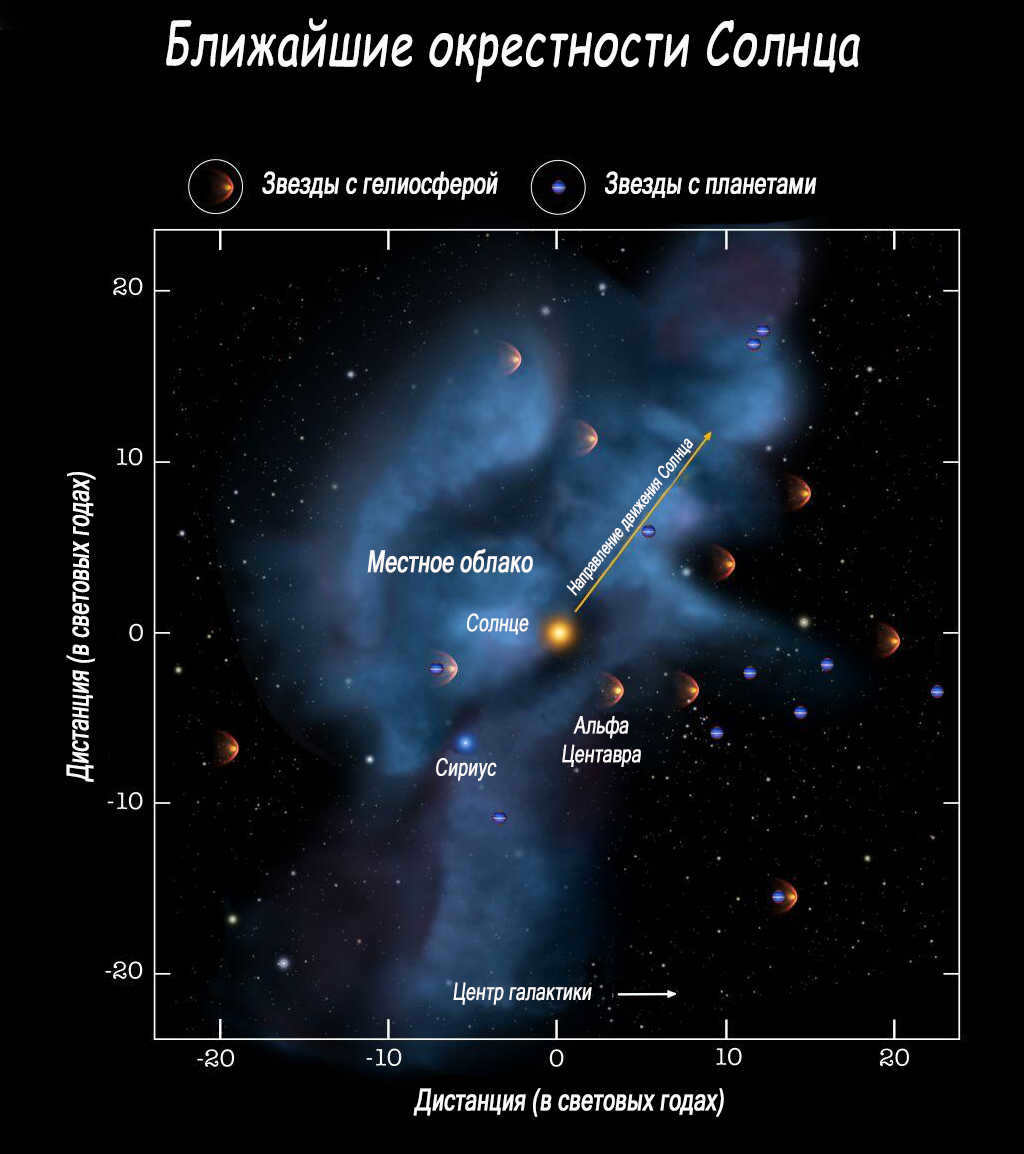

The closest vicinity of the Sun
The Sun’s standard motion is measured by observing its movement relative to visible stars. This movement is a reflection of the Sun’s own motion. The velocity of this motion is 3 astronomical units per year or 15 kilometers per second.
Exploring the heart of the Milky Way
Our galaxy’s core is a bustling hub of activity, and our solar system is constantly on the move within it. We are currently heading towards the Swan constellation, with a velocity of approximately 40 astronomical units per year, equivalent to 200 kilometers per second. This journey takes a staggering 220 million years to complete a full revolution.
Unfortunately, determining our precise speed is challenging due to the elusive nature of the apex, the center of the Milky Way. It remains hidden from our view, concealed behind dense clouds of interstellar dust. As time progresses, the apex shifts by 1.5° every million years, eventually completing a full circle in 250 million years, also known as a “galactic year.”
Embark on a thrilling cosmic adventure and witness the wonders of our galaxy by clicking on the video below:
Journeying towards the outskirts of the Milky Way
The movement of the Galaxy in the vastness of space
Not only is our Galaxy not stationary, but it is also advancing towards the Andromeda Galaxy at a velocity of 100-150 km/s. The Milky Way, along with a collection of other galaxies, is propelling itself towards the massive Virgo cluster at a speed of 400 km/s. The magnitude of the distances we traverse every single second is difficult to fathom, and the margin of error in calculating these distances remains substantial.
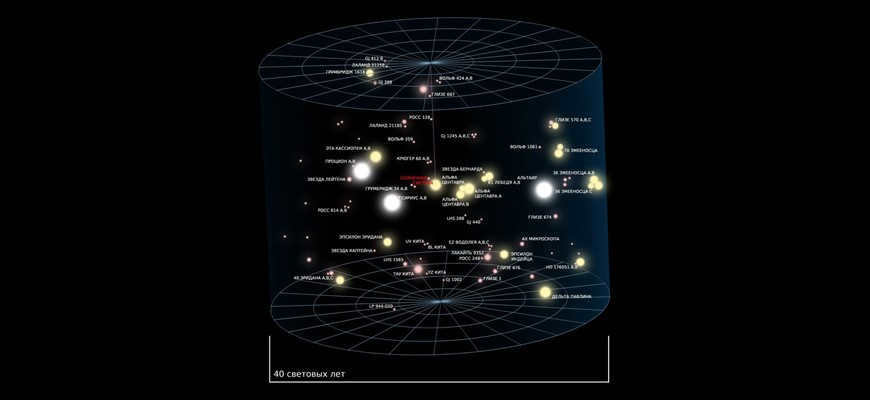
The solar system’s movement within the galaxy is an ongoing process governed by the principles of celestial mechanics. It follows an elliptical or almost circular path around the galactic center. Furthermore, the star exhibits harmonic oscillations in a wave-like manner with respect to the galactic disk’s plane.
Position in the Milky Way
Approximate movement of the solar system within the galaxy
Travel within the galaxy
The discovery of the solar system’s movement within the galaxy was made by William Herschel, an astronomer from England and Germany. He determined that the Sun’s path was directed towards the star Maasim, also known as Lambda in Hercules, at a velocity of 20 km/s. Modern calculations deviate by only ten degrees from Herschel’s calculations. This movement is considered peculiar or general. There is also the motion of the solar system within the galaxy, which astronomers have referred to as portable. The Sun, along with the closest stars that revolve around the center of the galaxy, is oriented towards the constellation of Swan, traveling at a speed of 200 to 250 km/s.
Stars, dust, and gas all have different rotational speeds, which depend on their position and distance from the center. Spiral clusters typically have a similar orbital velocity for both the stars near the core and the objects further out. However, in the case of the Milky Way, objects with orbits closer to the center rotate at a slower rate compared to those further away. The Sun, for example, follows an orbit that is almost a perfect circle. According to data from 2009, its speed is approximately 828,000 kilometers per hour. It takes about 230 million years for the Sun to complete a full revolution around the center of the disk, which is known as a galactic year.
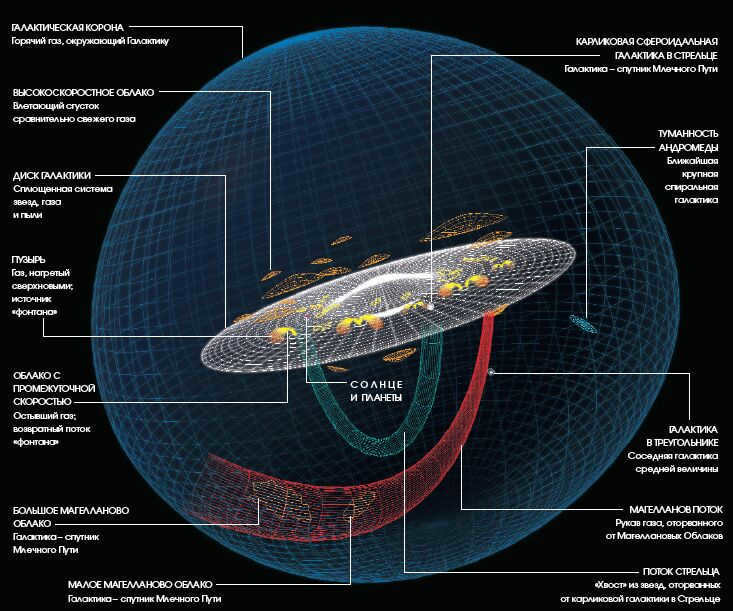
The region surrounding the Milky Way and its surrounding space.
In addition to its orbital motion, the Milky Way also experiences vertical oscillations within its plane. These oscillations occur approximately every 30 million years, causing the Sun to move between the northern and southern regions of the Milky Way. Currently, the Sun is positioned in the northern hemisphere, around 20-25 parsecs above the disk plane. It is currently passing through the Local Interstellar Cloud (LIC), which it entered 50-150 thousand years ago. Scientists predict that the Sun will exit the LIC in approximately 20 thousand years.
Moving in the vastness of the cosmos
The solar system is continuously rotating and traversing through space in relation to various celestial bodies, interstellar gas, and other objects. It is both moving away from certain entities and drawing closer to others. It has been determined that a convergence is occurring with the Andromeda galaxy (with a velocity of 120-150 km/s), and on a larger scale within the Local Group, there is an approach towards the Virgo Supercluster (with a velocity of 300-400 km/s).
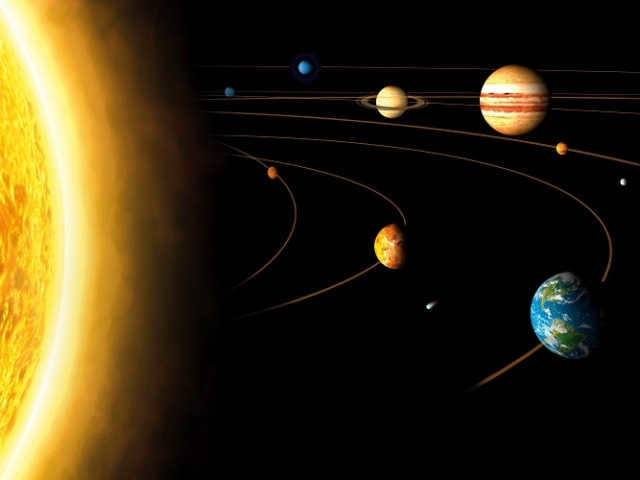
This article will explore the orbital patterns of the planets around the Sun.
The vast expanse of space has always captivated our ancestors and continues to intrigue people from all centuries with its uncharted terrain. Countless theories and conjectures have been proposed, along with groundbreaking discoveries. Among the most significant of these revelations is the realization that the planets revolve around the Sun, not around our own planet. Now, let’s delve into the details.
A Brief Historical Overview of the Planets and the Sun’s Movement
In ancient times, before the invention of telescopes and before humans had the ability to explore space, there was a widespread belief that the Earth was the center of the universe. According to this belief, the Earth was stationary at the center, while the Sun, the Moon, and other celestial bodies appeared to revolve around it, changing their positions in the sky. However, there were occasional attempts to propose alternative theories, but without sufficient evidence, they were not met with success.
In that era, numerous alternative hypotheses were proposed. Specifically, it was suggested that the planets orbit the Sun, but simultaneously, they orbit the Earth along with the Sun. However, one hundred years later, towards the conclusion of the 17th century, the majority of scientists arrived at a unanimous consensus that all the planets, including Earth, orbit the Sun in a counterclockwise direction, and this planetary rotation system was subsequently termed the Solar system.
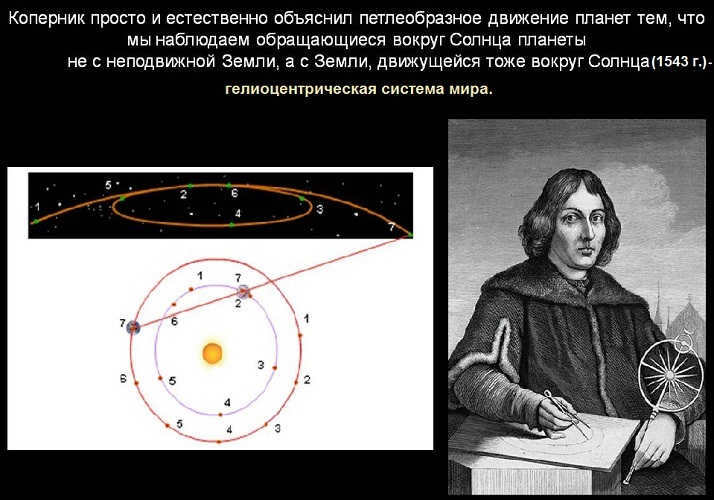
Thanks to him, the concepts regarding the rotation of celestial bodies underwent transformation.
The Sun’s direction of movement and the motion of the planets: what constitutes the Solar System?
When we gaze up at the night sky, we behold numerous radiant stars, and their quantity appears immense! However, this merely represents a fraction of the stars comprising the Universe. The vastness of the Universe is so immense that our imagination is incapable of comprehending it. Do they actually exist? – This is a question that science has yet to unravel. Most scientists are inclined to believe that the Universe is infinite and we can only discuss its size based on the perceived boundaries. In other words, those which can presently be observed through state-of-the-art telescopes or deduced through intricate calculations.
The Cosmos is made up of numerous Clusters of Stars. Our Sun is situated in the Milky Way Galaxy and is just one of billions of Stars. These celestial luminaries are glowing masses of gas, varying in size, brightness, temperature, light emission intensity, age, and structure, formed by celestial bodies revolving around them.
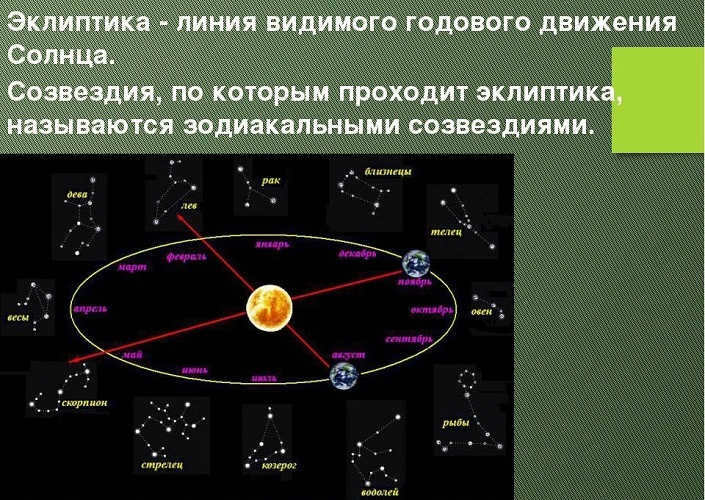
- Our Sun has been moving along its galactic orbit for approximately 5 billion years, traveling at a speed of around 270 km/s. It completes one revolution around the center of the Galaxy in about 226 million years. This means that the last time the Sun was in its current position in the Galaxy, dinosaurs ruled the Earth.
- However, the motion of the Sun is observed from different reference frames. One of these frames is based on the stars closest to the Sun. It is believed that the Sun and the solar system are moving towards the constellation Hercules along the ecliptic, a great circle on the celestial sphere. This motion takes place from west to east, and the Sun completes a full revolution along the ecliptic within a year.
- Moreover, the Sun also rotates on its axis, completing a full revolution in 22.14 years. Similar to all the other celestial bodies in our solar system, it orbits around a shared center of mass.
At midday, which falls between sunrise and sunset, the Sun attains its maximum altitude. By observing the shadow cast by a stick on a flat surface throughout the year, you will notice that the height of the shadow fluctuates with the changing seasons!
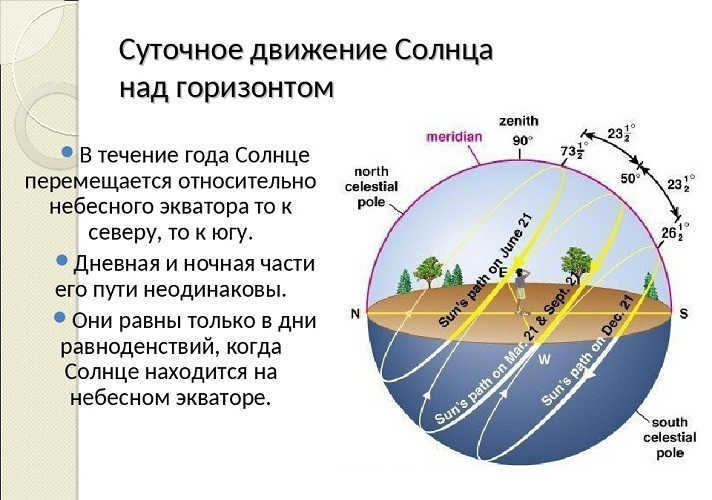
The path and trajectory of the Sun
The movement of the planets and the composition of the solar system: how do the planets orbit the Sun?
The Sun serves as the primary source of energy and gravity that holds all celestial bodies in its vicinity and facilitates their rotation around it. These celestial bodies include:
- The planets comprising the solar system
- The asteroid belt
- The Kuiper Belt and the Oort Cloud
There are a total of eight planets in the Solar System, positioned at varying distances from the Sun and exhibiting diverse sizes. However, all of them rotate on their axis and orbit our star in the same direction, albeit in individual paths.
Pluto lost its status as a planet in 2006! There is speculation about a new planet in our system, Sedna, but it has not yet received official confirmation!
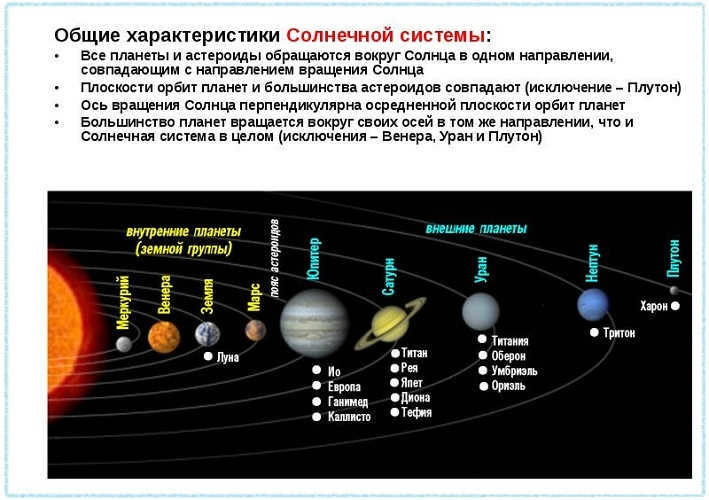
Let’s take a look at the movement of these planets as they distance themselves from the Sun:
Observing both our daily lives and the vast expanse of the universe, we can see that every aspect carries its own significance and purpose, just like the orbital paths of the planets and all celestial bodies. It’s as if they are interconnected, reliant on one another, and in the case of our solar system, on the Sun, which governs their rotations.
Estimated reading time: 16 minutes
Share

- Astrology of Birth Charts
- Astrology of Relationships
- Self Improvement and Psychology
- Future Forecasting in Astrology
- Horoscopes and Prophesies
- Astrological Charms
- The Formula of the Soul
- Study of Numerology
- Astrological Tarot Readings
- Astrology around the World
- For Newcomers in Astrology
- For Astrology Professionals
- Advancing as an Astrologer
Estimated Reading Time: 16 minutes
The movement of the planets around the Sun initiates the spinning of our solar system’s merry-go-round. The velocity and trajectory of this rotation have played a vital role in facilitating the prosperous evolution and flourishing of life on our planet. Nevertheless, for numerous centuries, the geocentric theory prevailed on Earth, asserting that the Earth is the center of the universe and the Sun orbits around it. The Polish scholar Nicolaus Copernicus disproved the validity of this belief, though he faced significant opposition and persecution for his groundbreaking concepts during his era.
Nowadays, there is no necessity to question the doctrines of the church, as we are fully aware that it is indeed the Sun around which all the other planets in our solar system orbit. However, the precise manner in which they move remains a mystery. Why is it that the Earth’s motion enables it to sustain a consistent temperature, while the temperatures of the massive planets in our solar system fluctuate drastically? What causes the planets to travel along such varied orbits?
The historical significance of the discovery of planetary motion around the Sun

The initial description of the planetary arrangement was recorded by the ancient Greek astronomer Ptolemy in his renowned treatise “Great Mathematical Construction on Astronomy”. He proposed that all celestial entities follow a circular path, with the Earth positioned at the center, while the Sun, Moon, and other planets orbit around it. This false belief persisted as the universally accepted theory for a considerable period of time.
Nicolaus Copernicus, a Polish astronomer, brought about a revolutionary change in our understanding of the Universe. In his groundbreaking publication “On the Rotation of the Celestial Spheres” published in 1543, he provided compelling evidence that all celestial bodies orbit the Sun. This work solidified the heliocentric model as the universally accepted concept, leaving no room for doubt. Copernicus is remembered as the scientist who successfully demonstrated the planetary motion around the Sun.

After the death of Copernicus, the Danish astronomer Tycho Brahe carried on his research. He was a wealthy individual who spared no expense in acquiring equipment to study the celestial bodies. On his private island, he placed bronze circles where he recorded the results of his observations. Later on, the German mathematician Johannes Kepler used Brahe’s findings to derive the three laws that describe the movement of planets around the Sun.
Kepler presented compelling evidence of the orbital motion of the six planets known at that time around the Sun in elliptical paths. This theory was further developed by the English scientist Isaac Newton. Using his law of universal gravitation, Newton explained the phenomenon of tides as being influenced by the gravitational pull of the Moon.
There are various components that make up the solar system:

- The Sun: It serves as the central hub and primary source of energy within our solar system. With its immense gravitational force, the Sun anchors the planets and orchestrates their orbital movements.
- The Inner Planets: In the realm of astronomy, the solar system is categorized into two distinct regions – the inner and outer sections. The inner section encompasses the four planets that lie closest to the Sun: Mercury, Venus, Earth, and Mars. These planets share commonalities such as being composed mainly of rocks and metals, resulting in their high density. Furthermore, the rocky planets exhibit relatively smaller sizes and masses compared to other celestial bodies within our solar system.
- The region of space beyond Mars known as the asteroid belt is believed by astronomers to have formed at the same time as the solar system. This belt is made up of debris of various sizes.
- The four gas giants in the outer part of the solar system are Jupiter, Saturn, Uranus, and Neptune. These planets are characterized by their massive size and low density, which is due to their composition of gas. Despite this, they still have strong gravitational forces and are surrounded by numerous satellites. For example, Jupiter has 63 moons orbiting around it. The gas giants are located at a significant distance from the Sun.
The emergence of the solar system

During warm summer evenings, individuals gaze up at the sky in wonderment, captivated by the vast array of stars. However, our view is limited to a mere fraction of the countless celestial bodies that compose the Universe. Grasping its true magnitude is an arduous task. It is believed that the Universe is boundless, with humankind only able to explore it within the confines provided by contemporary astronomical equipment.
The Universe comprises galaxies – clusters of stars.
The solar system is an integral part of the Milky Way galaxy, with the Sun serving as one among billions of other stars. Each star is an incandescent mass of gas with unique attributes: luminosity, temperature, size, and structure, all of which are formed as a result of the interaction of celestial bodies orbiting around it.
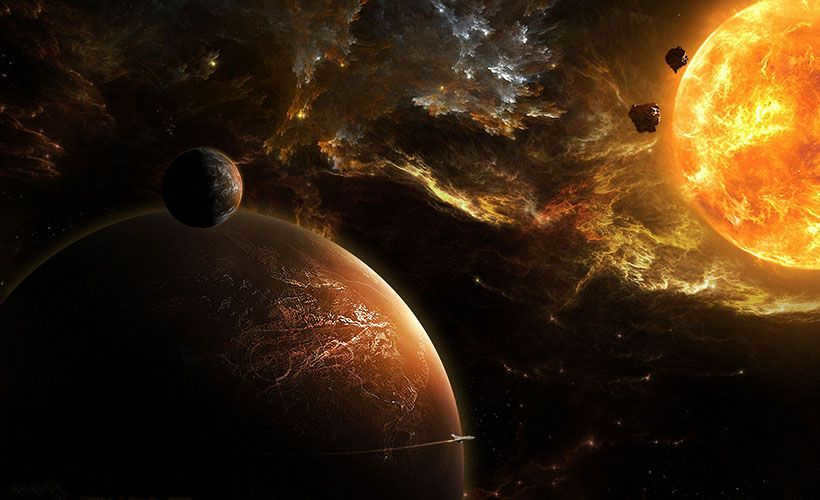
The process of a new star being born is a lengthy one. A gas-dust nebula condenses under the force of gravity, eventually transforming into a rotating disk with the majority of the matter concentrated in the center. As the central core continues to collapse under gravity, it decreases in size and its temperature rises. Once it reaches temperatures in the tens of millions of degrees, a thermonuclear reaction is ignited, giving birth to a star.
The temperature surrounding the star is so high that only solid objects that are exceptionally sturdy can exist nearby, such as the Earth. Gas giants, on the other hand, form at a much greater distance from the Sun, where temperatures are not as extreme.
The velocity and trajectory of the planets’ revolution around the Sun

The Sun has been traveling along its galactic orbit for nearly 5 billion years. Its velocity is 270 km/s, and it takes 226 million years to complete a full revolution around the galaxy’s center. This means that the last time the Sun occupied its current position was during the era of dinosaurs.
Various reference frames are utilized to monitor the Sun’s motion, including those linked to nearby stars. Astronomers hypothesize that the solar system is moving in the direction of the Hercules constellation, from west to east, along the celestial sphere’s great circle known as the ecliptic. This complete revolution takes one year.
Simultaneously, the Sun undergoes rotation on its own axis, completing one revolution every 22.14 years. Additionally, akin to the other celestial bodies in our solar system, our star undergoes movement around a shared center of mass.
The solar system encompasses eight planets. Up until 2006, Pluto was recognized as the ninth planet, but it has since been reclassified as a dwarf planet. Each planet rotates on its own axis and orbits its unique path. As they are situated at varying distances from the Sun, all planets move in the same direction.
Let’s examine the progression of each planet as they move away from the Sun:
- Mercury – the smallest and nearest planet to the Sun completes a revolution around it every 88 Earth days
- Venus – comparable in mass and size to Earth, but with an average temperature of 462 degrees Celsius. A year on Venus is equivalent to a day on Earth: it orbits the Sun in 224.7 Earth days and rotates on its axis in 223 Earth days
- Mars – orbits the Sun in the same amount of time as the Earth – 24 hours and 37 minutes.
- Jupiter, being a massive planet, rotates on its axis in 10 hours and completes a full orbit in 10 Earth years.
- Saturn – a day lasts 10.7 hours and a year lasts 29.5 Earth years.
- Uranus – it takes 84 Earth years, or 30,687 days, to complete one orbit around the Sun.
- Neptune – completes a full orbit in 164.79 Earth years, and rotates on its axis in about 16 hours.
The pattern is straightforward: As a planet gets farther from the Sun, its speed decreases and the distance it has to travel increases. Consequently, the speed of the planets in the solar system is highest near the Sun and gradually decreases towards the outer regions. Prior to the reclassification of celestial bodies, Pluto was considered the outermost planet, moving at a velocity of 4.67 km/s.
The velocity at which a planet moves is influenced by its specific position in its orbit. The point on an elliptical path that is farthest from the Sun is called the perihelion, while the point closest to the Sun is called the aphelion. At perihelion, the linear velocity is higher compared to aphelion. This means that the planet orbits either faster or slower.
The duration of the Earth and planets’ movement around the Sun

The primary asteroid belt, situated between the orbits of Mars and Jupiter, likewise revolves around the Sun. Its orbital period ranges from 3.5 to 6 Earth years, and its direction aligns with the paths of the planets.
The laws of gravity apply universally to all celestial bodies, including the Kuiper Belt, a secondary asteroid ring comprising dwarf planets that lies at the outer reaches of the solar system. The Oort Cloud consists of billions of icy bodies that also orbit the main star, completing a full revolution every 200 years. Beyond these asteroid clusters, the gravitational influence doesn’t extend, serving as a sort of boundary for the solar system.
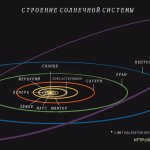
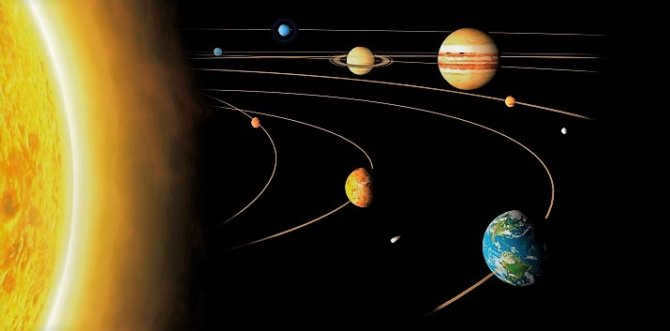
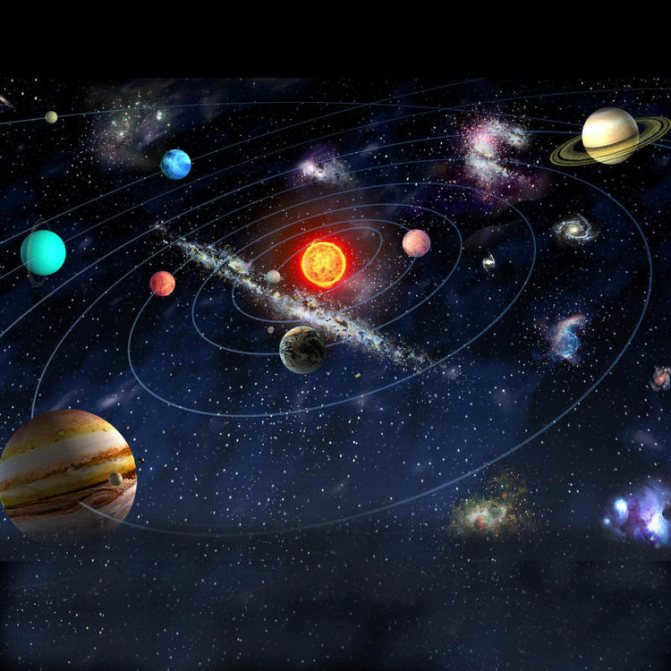
The definition of a planet states that it is a celestial body that revolves around a star. The orbit, on the other hand, refers to the path that this planet takes within the gravitational field of another celestial body, usually a star. In the case of Earth, the Sun is the star that it orbits.
All the planets in our solar system follow their own orbits in the direction of the Sun’s rotation. However, there is one exception to this rule – an exoplanet known as WASP-17b, which is located in the Scorpius constellation and moves in the opposite direction.
What is the definition of orbital velocity?
Orbital velocity refers to the path that a specific planet follows while orbiting the Sun. Contrary to common misconceptions, it is not a perfectly circular orbit. Additionally, it does not closely resemble an oval either, considering the multitude of influences that impact the movement of celestial objects besides the gravitational pull exerted by the Sun.
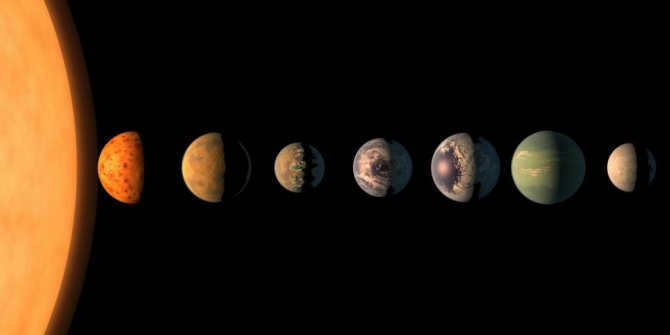
There is another popular misconception that needs to be clarified – the Sun does not always occupy the exact center of the orbits of the planets revolving around it.
Furthermore, it is important to mention that not all of the planets’ orbits are on the same plane. Some deviate significantly from it – for instance, if you were to plot the standard orbits of Earth and Venus on an astronomical chart, you would notice that they intersect only at a few points.
Now that the arrangement of the orbits has been more or less organized, we can revisit the definition of orbital velocity for the planets. This is what astronomers refer to as the rate at which a planet travels along its path. It can vary slightly – depending on the presence of nearby celestial bodies. This effect is particularly noticeable in the case of Mars: each time it comes relatively close to Jupiter, it experiences a slight decrease in speed, as it is attracted by the gravitational field of this massive planet.
Scientists have long established the relationship between the speed of the planets around the Sun and their distance from it.
In other words, the planet closest to the Sun – Mercury – moves the fastest, while Pluto has the slowest speed in the entire solar system.

The truth is that each planet’s velocity corresponds to the gravitational force exerted by the Sun at a specific distance. If the velocity is too low, the planet will gradually approach the star and eventually be consumed by it. Conversely, if the velocity is too high, the planet will simply escape the gravitational pull of our solar system’s center.
Every astronomer, regardless of experience, is well aware that the strength of gravity diminishes as distance from the Sun increases. This is why Mercury must maintain an incredibly high velocity in order to remain in its orbit, while Mars can move at a slower pace, and Pluto barely moves at all.
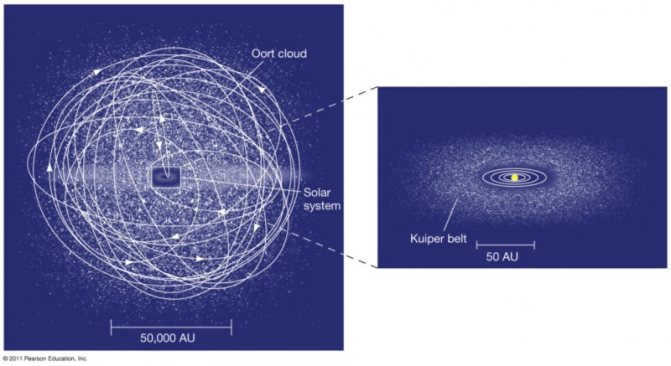
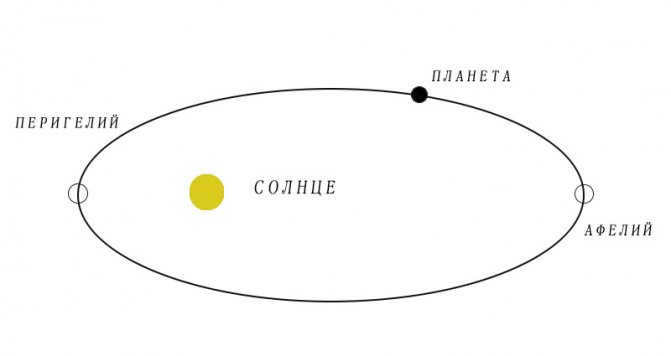
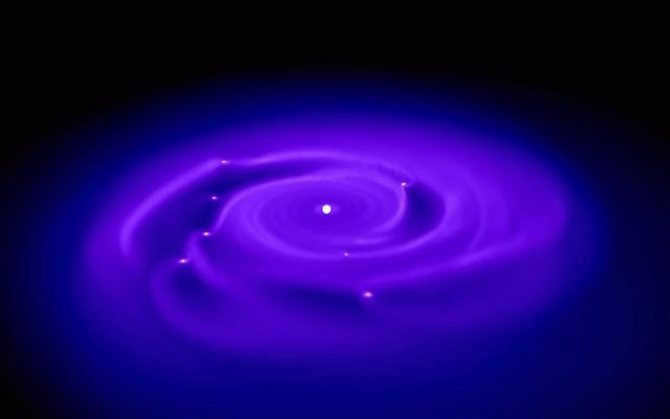

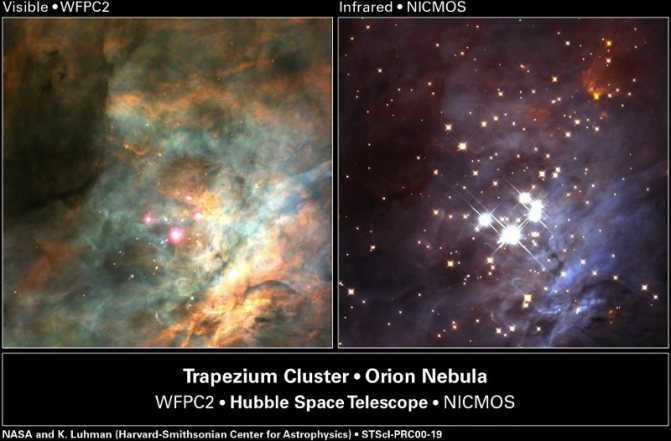

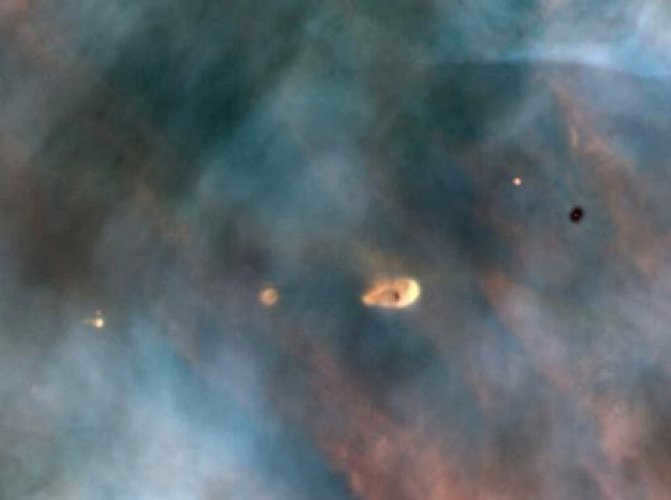



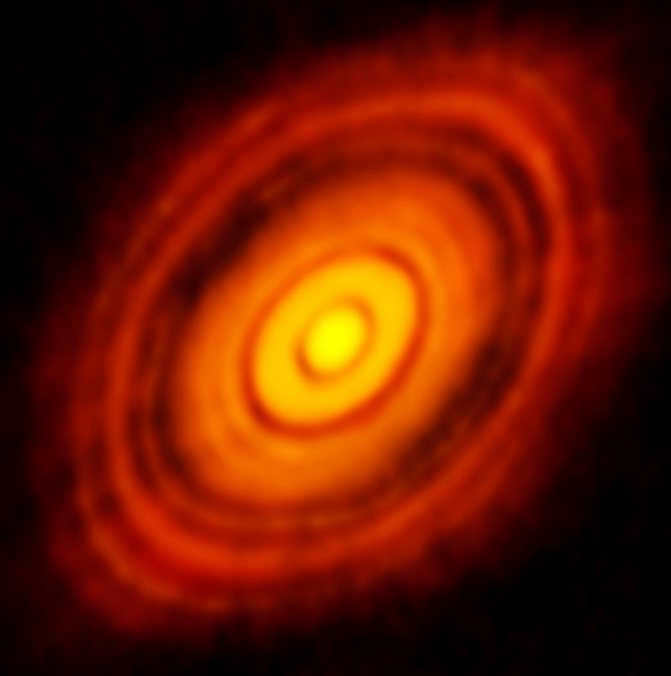
Each orbit possesses its unique arrangement of parameters. Furthermore, it is this specific arrangement that determines its structure, magnitude, and position in space. In the field of astronomy, it is customary to employ the Keplerian elements of the orbit. These elements encompass:
- major semi-axis – a geometric characteristic of celestial objects. It is formed by a conical section, which represents the intersection of a plane with the surface of a circular cone.
- Eccentricity – a numeric parameter of the conic section that indicates its deviation from a perfect circle.
- Inclination – the angle between the plane and the orbit.
- Pericenter argument – the angle between the directions from the center to the ascending node of the orbit. The pericenter itself is defined as the point on the orbit that is closest to the center of attraction.
- The longitude of the ascending node can be defined as the mathematical representation of the line in the orbital plane relative to the reference plane.
- The mean anomaly is calculated by multiplying the average motion of the celestial body by the time interval from the pericenter. It maintains a constant angular velocity.
Mercury
Mercury, the planet closest to the Sun, is where we will begin our study of the speeds of the planets in the solar system.
Not only does Mercury have the smallest orbital radius, but it is also a small planet. It is actually the smallest fully-fledged planet in our system. With a distance from the Sun of less than 58 million kilometers, the temperature at its equator can reach 400 degrees Celsius or even higher on a hot day.

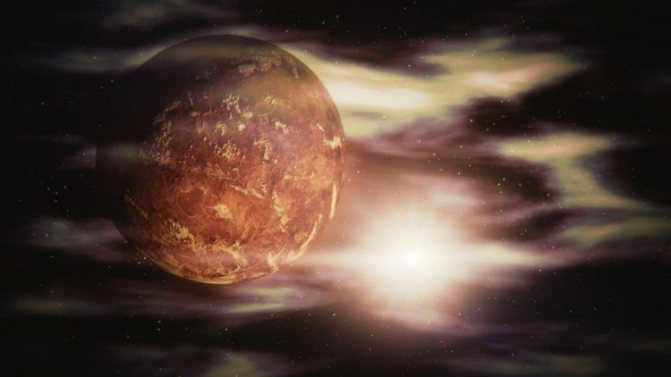

What is the reason for the Earth’s faster rotation compared to other planets?
One theory proposed by scientists is that a Mars-sized object collided with the Earth, causing a large chunk to separate and form the Moon. This collision resulted in the Earth rotating at a higher speed than other planets. However, the gravitational pull of the Moon has a slowing effect on the Earth’s rotation.
Fascinating fact: The Earth’s rotation is constantly slowing down. It is believed that when the planet was formed, a day lasted only 6 hours. With the help of advanced technologies, scientists can now accurately predict the further deceleration of the Earth’s rotation. In a hundred years, the day will be 2 milliseconds shorter.
Venus
Venus is the subsequent planet in our solar system. It is the singular planet where the Sun emerges in the west and sets in the east. The distance to the center of the solar system is approximately 108 million kilometers. Consequently, the velocity of Venus’ orbit is significantly slower than that of Mercury, measuring only 35 kilometers per second. Additionally, Venus is the sole planet in which the orbit is almost perfectly circular, with an exceptionally minute margin of error (or, as experts refer to it, eccentricity).
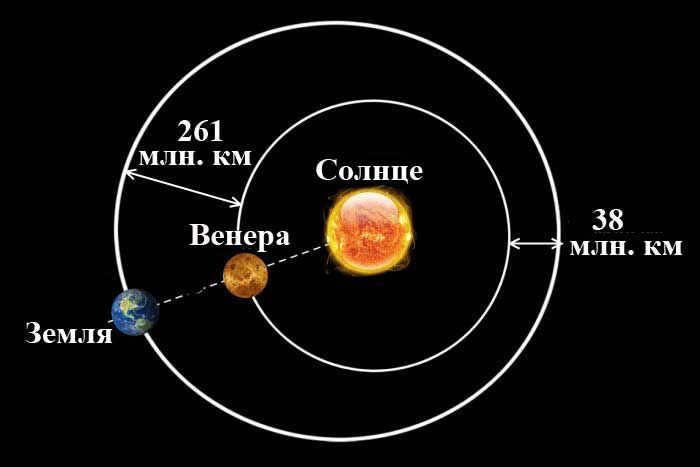
However, Venus takes only 225 days to complete its full orbit, which is much longer than Mercury’s orbit. Another fascinating fact that sets Venus apart from all other planets in the Solar System is its rotational period, which lasts 243 Earth days. As a result, a year on Venus is shorter than a day.
From Ptolemy to Newton
In his work “The Great Mathematical Construction of Astronomy,” the ancient Greek astronomer Ptolemy proposed a theory on the arrangement of planets in the sky. Ptolemy suggested that the planets move in circular paths. However, he mistakenly believed that all planets, including the Moon and the Sun, revolve around the Earth. For a considerable period of time, Ptolemy’s treatise was widely accepted in both the Arab and Western societies.

It was Nicolaus Copernicus who brought an end to this contentious reality. by Nicolaus Copernicus. The Polish scientist devised his heliocentric model, in which he provided compelling evidence that the Earth is not the focal point of the universe, and all the planets, in accordance with his steadfast conviction, revolve around the Sun. The treatise “On the Rotation of the Celestial Spheres,” authored by a Polish scholar, was released in the German city of Nuremberg in 1543..
After the passing of Copernicus, a Dane named Tycho Brahe took up his work. This astronomer, who possessed great wealth, adorned his island with magnificent bronze circles where he meticulously recorded his observations of celestial bodies. Brahe’s findings proved invaluable to the mathematician Johannes Kepler, who went on to establish his renowned three laws of planetary motion.
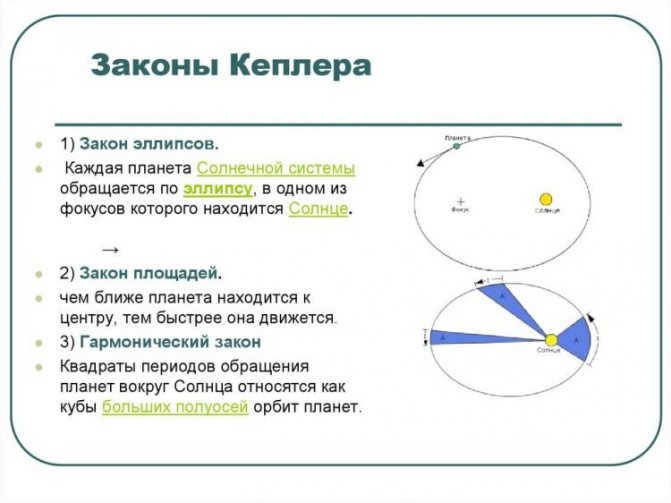
The law of universal gravitation and the elliptical orbits of celestial bodies were major breakthroughs in human knowledge, credited to the brilliant mind of Isaac Newton. Newton’s explanation of the Moon’s influence on Earth’s tides was widely accepted and helped advance scientific understanding.
Planet Earth
Let’s now turn our attention to the celestial body that has become the abode of humanity – Planet Earth. With an average distance of approximately 150 million kilometers to the Sun, this measurement is commonly known as one astronomical unit, which is often used when calculating relatively short distances in outer space.
It may be hard to fathom, but as you peruse through this article, you are in motion alongside Planet Earth at an astonishing speed of nearly 30 kilometers per second. However, despite this remarkable velocity, it takes our planet more than 365 days, or one complete year, to complete a full revolution around the Sun. On the other hand, it rotates on its axis quite swiftly, taking just 24 hours. Nevertheless, these and numerous other details regarding our home planet are widely known, so we won’t delve into a comprehensive exploration of Earth. Instead, let’s proceed to the next celestial body.
The gravitational force is also influenced by the mass of objects, which refers to the quantity of material within them. The Earth and the Sun exert a mutual attraction on each other, but since the Sun has a much larger mass, it exerts a stronger pull on the Earth. Scientists theorize that gravity causes space to curve around clusters of matter. The larger the cluster, the more significant the distortion of space. How does this occur? To demonstrate, take a sheet and stretch it tightly with the help of a partner. Then, place a heavy metal ball on the sheet. The weight of the ball will cause the sheet to bend and conform to its shape.
Fascinating trivia: Scientists firmly believe that gravity has the ability to warp space, giving it a distinct form.
If you place smaller balls on a sheet, they will gravitate towards the larger one. Scientists have observed a similar phenomenon with stars, where they distort space and cause nearby objects to be pulled towards them, much like the balls on the sheet.
If you spot any mistakes, please select the text and press Ctrl+Enter.
Mars
The red planet, Mars, takes its name from the formidable god of war. It shares a close proximity to Earth, evident in various aspects. For instance, Mars orbits at a speed of 24 kilometers per second. Its distance from the Sun is approximately 228 million kilometers, resulting in a relatively cool surface. During the day, temperatures rise to a modest -5 degrees Celsius, while plummeting to a chilling -87 degrees at night.

However, the duration of a day on Mars is nearly the same as that of Earth, totaling 24 hours and 40 minutes. In order to simplify this concept, a unique term has even been coined for a Martian day – sol.
Due to the considerable distance from the Sun and the elongated trajectory of its orbit compared to Earth’s, a year on Mars lasts a significantly longer period of time – a total of 687 days.
Despite having a relatively small eccentricity of about 0.09, the orbit of Mars can be considered approximately circular with the Sun positioned near the center of the circumferential circle.
Jupiter was named after the mighty Roman god, making it the largest planet in the solar system with a radius of nearly 70,000 square kilometers. In comparison, the Earth has a radius of only 6,371 kilometers.
Due to its distance from the Sun, Jupiter rotates at a relatively slow speed of 13 kilometers per second. It takes the planet almost 12 Earth years to complete one full orbit!
Despite its slow rotation, Jupiter has the shortest day in our solar system, lasting only 9 hours and 50 minutes. The planet has a very small axial tilt of only 3 degrees, while Earth has a tilt of 23 degrees. This lack of tilt results in the absence of seasons on Jupiter, and the temperature remains constant, only fluctuating during the planet’s short days.
The eccentricity of Jupiter is relatively small, measuring less than 0.05. As a result, it revolves in a uniform circular orbit around the Sun.
Saturn
Similar to Jupiter, Saturn is a significant celestial body in our solar system, ranking as the second largest. Its radius measures 58,000 kilometers.
As mentioned earlier, Saturn’s orbital speed is gradually decreasing. Currently, it is only 9.7 kilometers per second. Despite this relatively slow pace, the distance it covers is quite substantial – almost 9.6 astronomical units, which takes approximately 29.5 years to complete. Interestingly, Saturn has one of the shortest days in the system, lasting only 10.5 hours.
The eccentricity of the planet is nearly identical to that of Jupiter, with a value of 0.056. As a result, the orbit is relatively flat, with a difference of just 162 million kilometers between perihelion and aphelion. Considering the vast distance from the Sun, this disparity is relatively insignificant.

It is fascinating to note that the planet Saturn also possesses revolving rings, with the outer layers moving at a significantly slower pace compared to the inner layers.
The Discovery of Earth’s Orbit
In ancient times, the prevailing belief was that the Universe revolved around the Earth, a concept known as the geocentric model. This theory, embraced by influential figures such as Ptolemy and Aristotle, held that the Earth was at the center of the cosmos with all celestial bodies orbiting around it. However, an ancient Greek scientist named Aristarchus of Samosia challenged this idea. In the 3rd century BC, while observing a lunar eclipse, Aristarchus came to the realization that the Moon was not an independent source of light but rather reflected sunlight. He also deduced that the Moon was significantly smaller than the Sun in terms of diameter. These observations led Aristarchus to question the notion that a massive celestial body like the Sun would revolve around a much smaller object like the Earth.

Ptolemy’s geocentric world system. In this proposed world system, the Earth, which is spherical, is positioned at the center of the universe. Credit: infourok.ru.
The geocentric theory was ultimately discredited in 1534 by Nicolaus Copernicus, a Polish astronomer and the proponent of the heliocentric doctrine. Copernicus demonstrated that the Sun cannot orbit around the Earth.
The individual who first established the elliptical shape of our planet’s orbit was Johannes Kepler, a German scientist. By observing the movement of both Earth and Mars, he came to the realization that the planets periodically decelerate and then accelerate once more. This would be impossible if the orbit were circular.
Uranus
Uranus is another colossal celestial body in our solar system. In terms of size, it is only surpassed by Jupiter and Saturn. However, Neptune outweighs Uranus due to its high core density. The average distance between Uranus and the Sun is truly astronomical, spanning 19 astronomical units. Given this immense distance, Uranus moves at a relatively slow pace, with its orbital speed not exceeding 7 kilometers per second. Consequently, it takes Uranus a staggering 84 Earth years to complete one orbit around the Sun! That is an incredibly lengthy period of time.
Despite its sluggish orbit, Uranus surprisingly rotates on its axis quite rapidly, completing a full revolution in just 18 hours!
One remarkable aspect of this planet is its unique pattern of rotation. Unlike other planets in our solar system that rotate vertically, Uranus rotates horizontally. It “rolls” along its orbit, as if lying on its side, while other planets “stand” at their poles. Scientists believe this unusual rotation is the result of a collision with a large cosmic body during the planet’s formation, causing it to roll on its side. As a result, the length of a day on Uranus is significantly different from what we consider normal. At the poles, the day lasts for 42 years, followed by an equal number of years of night.
Gravity: The Universal Force of Attraction
Upon closer examination, it becomes evident that the absence of gravity would result in the absence of planets altogether. Gravity, the force of attraction between objects, is responsible for the accumulation of matter that ultimately forms the planets and shapes them into their spherical form.
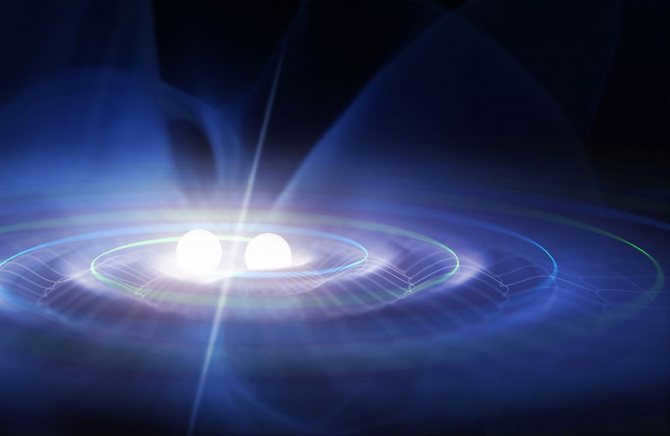
Gravity
The gravitational pull of the Sun is sufficient to keep nine planets, numerous satellites, and countless asteroids and comets in close proximity. This entire assembly orbits the Sun akin to a swarm of moths around a well-lit veranda. In the absence of gravitational force, each of these planets, satellites, and comets would veer off in their own individual, linear paths. However, due to the Sun’s gravitational force, they instead orbit around it, as the Sun continuously distorts their straight-line trajectory, attracting planets, moons, comets, and asteroids towards itself.
Neptune
The illustrious god of the seas and oceans in ancient Roman mythology bestowed his proud appellation upon Neptune. It is not without reason that the emblem of the celestial body takes the form of his iconic trident. In terms of magnitude, Neptune ranks as the fourth planet in our solar system, coming in only slightly behind Uranus – its mean radius measures 24,600 km compared to Uranus’ 25,400 km.
Neptune maintains an average distance of 4.5 billion kilometers or 30 astronomical units from the Sun. Thus, the distance it traverses during its orbital revolution is truly staggering. When we factor in the planet’s circular velocity of merely 5.4 kilometers per second, it comes as no surprise that a single Neptunian year is equivalent to 165 Earth years.
Here’s a fascinating tidbit: the planet boasts a rather thick atmosphere (albeit comprised primarily of methane), and at times, it experiences incredibly powerful gusts of wind. These winds can clock in at a whopping 2100 kilometers per hour – a force so mighty that on our home planet, a mere gust of such intensity would promptly decimate any metropolis, leaving no trace behind.
Implications for Us
We may not be aware of the Earth’s motion, but if it were to suddenly halt, there would be catastrophic consequences. Our planet’s orbit is determined by a combination of solar gravity and its own movement. If either of these factors were altered, such as by increasing the strength of solar gravity or decreasing the planet’s motion, the Earth would be pulled towards the Sun. On the other hand, if solar gravity were to disappear or significantly decrease and the planet’s motion were to intensify, we would be at risk of being flung off into outer space.
As for concerns about galaxies colliding in the near future, they are premature. The Milky Way moves at a relatively slow speed. It would take at least 200-300 million years for it to travel a distance equal to its own diameter.
Lastly, the final celestial body on our roster. To be more precise, not a planet at all, but rather a dwarf planet – it was recently demoted from the planet classification due to its diminutive size. Its average radius measures a mere 1187 kilometers – even our Moon surpasses this measurement at 1737 kilometers. Nevertheless, it bears a rather formidable name – it was bestowed in homage to the deity of the subterranean realm of the deceased in ancient Roman mythology.

The average distance between Pluto and the Sun is approximately 32 astronomical units. This allows Pluto to maintain a safe distance and move at a leisurely speed of only 4.7 kilometers per second – there’s no danger of this tiny planet falling into the scorching heat of the star. However, due to its vast orbit, it takes Pluto a whopping 248 Earth years to complete one revolution around the Sun.
In addition, Pluto rotates very slowly around its axis, taking 152 Earth hours or over 6 days to complete a full rotation.

Furthermore, with an eccentricity of 0.25, Pluto’s orbit has the highest deviation from circularity in the entire solar system. As a result, the Sun is situated far from the center of its orbit and is displaced by nearly a quarter of its distance.





Scientists of the present day have taken their research a step further and discovered that the Sun is not actually the center of the universe. Instead, it orbits around the center of the Milky Way galaxy. However, recent observations from telescopes in Earth’s orbit have revealed that the Milky Way is not the sole galaxy in existence. In fact, there are billions of other galaxies, as well as star clusters and cosmic dust clouds, scattered throughout the vast expanse of space. Furthermore, the Milky Way Galaxy itself is in motion relative to these other cosmic entities.

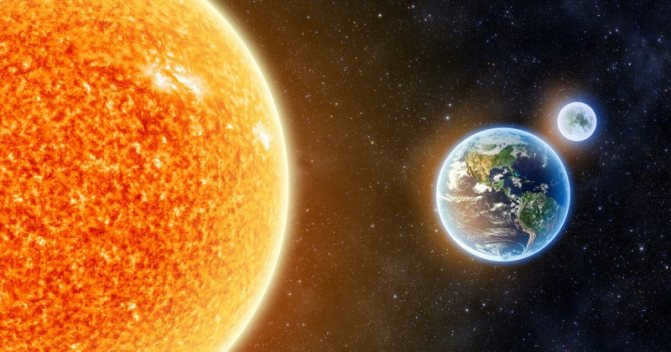

The Sun’s Pulsation
The Sun undergoes a rhythmic expansion and contraction every five minutes, giving the impression of its breathing. The exact reason behind this pulsation remains unknown. One hypothesis suggests that the passage of sound waves through the solar gases is responsible for the expansion and contraction.
Another type of solar pulsation may be caused by gravity, occurring approximately every half hour. Scientists propose that dense gases from the solar core spread to the less dense gases in the surface layers, causing the Sun to expand slightly. Subsequently, gravity pulls these dense gases back towards the center, causing the Sun to shrink again.
If you come across any errors, please highlight the text and press Ctrl+Enter.
Luminosity
The movement of the Solar System in the Galaxy is primarily driven by the Sun. The Sun follows an elliptical, almost perfectly circular path and pulls along the planets and asteroids that compose the system. In addition to revolving around the center of the Milky Way Galaxy, the Sun also rotates on its own axis. Its axis is tilted at an angle of 67.5 degrees. Due to this tilt, the planets in the solar system appear to rotate in a vertical plane rather than an inclined one when observed from the outside. The Sun rotates counterclockwise around the center of the Galaxy.

The Solar System also experiences vertical movement, with periodic sinking or rising relative to the central point, occurring once every 30 million years. This trajectory may be attributed to the rotational movement of the Milky Way galaxy’s core, which periodically tilts in different directions. The Sun simply follows these movements, as dictated by the laws of physics, which require it to move along the equator of the galaxy’s central body. Scientists believe that this central body contains a massive black hole. However, it is possible that other large objects also influence the trajectory of the Solar System.
The velocity of the Solar System within the Milky Way Galaxy matches the velocity of the Sun, which is approximately 250 km/s. It completes one full orbit around the galactic center every 13.5 million years. Throughout the entire timeline of the Milky Way Galaxy, the Sun has successfully completed three full revolutions.
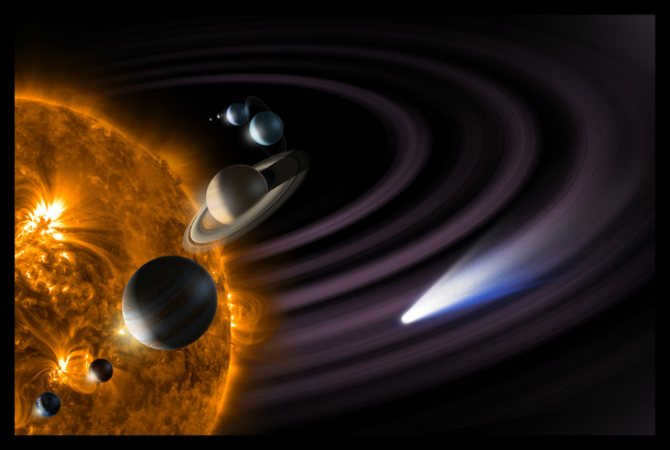
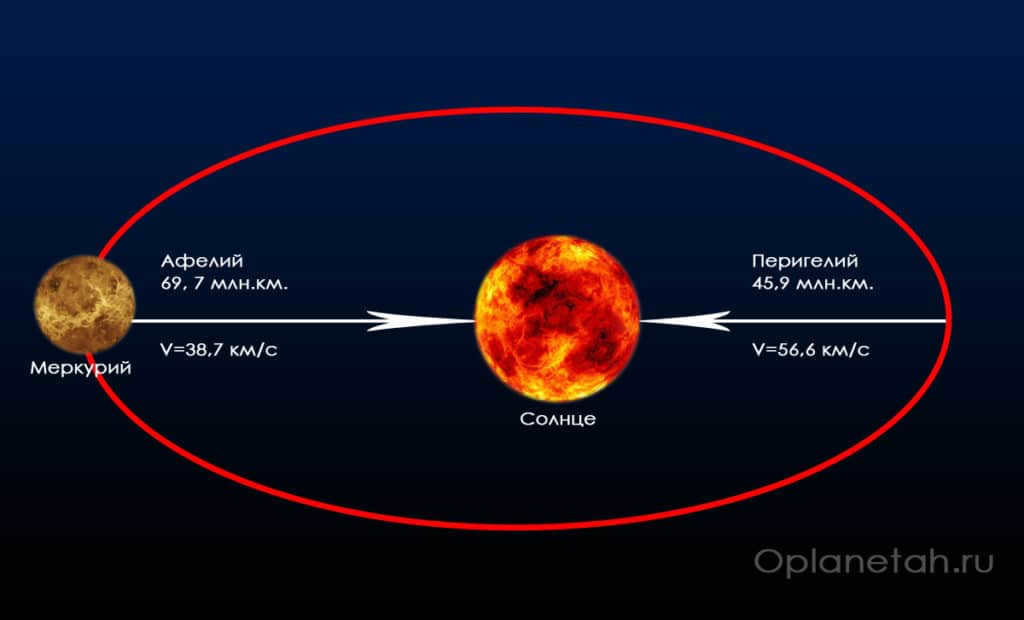

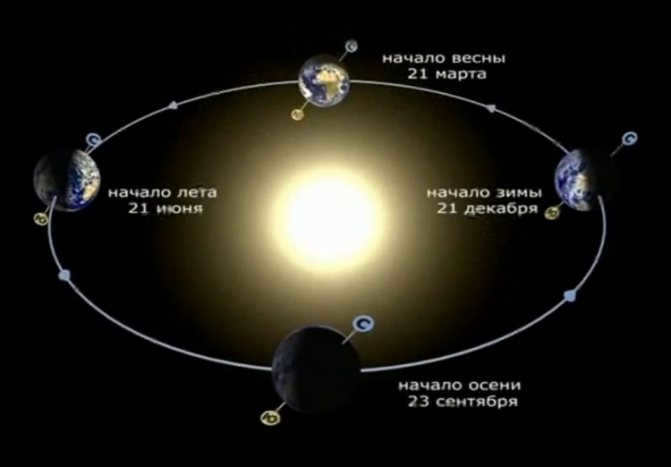
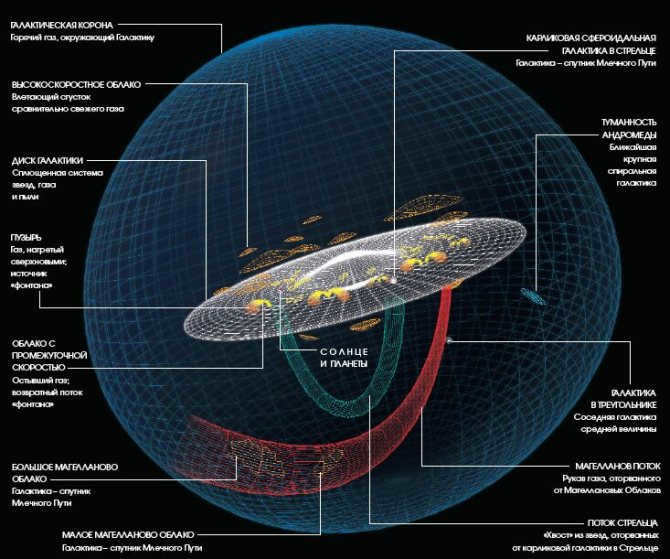
Oscillation of the Earth’s axis
In the field of physics, there are two fundamental concepts used to describe the oscillation of the Earth’s axis – precession and nutation.
Precession refers to the phenomenon in which the momentum of a celestial body undergoes a change in direction within space. This can be visualized by considering the example of a spinning top, initially rotating about a vertical axis. As the top gradually slows down, its rotational speed decreases, resulting in a deviation of the axis from its original vertical orientation. This deviation causes the axis to trace out a cone-like shape, which is known as precession.
The principles of motion
When calculating the velocity of the Solar System’s movement around the center of the Galaxy and the planets that comprise this system, it is essential to consider that Newton’s laws, specifically the law of gravitation or attraction, are in effect within the Solar System. However, when determining the trajectory and velocity of the planets around the center of the Galaxy, Einstein’s theory of relativity also comes into play. As a result, the velocity of the solar system is equivalent to the speed of the Sun’s rotation, as it contains approximately 98% of the system’s total mass.
Kepler’s second law is followed by its movement within the Galaxy. In the same way, this law is obeyed by the planets of the solar system. According to this law, all planets move in a single plane around the Sun’s center.

Common Misconceptions about Astronomy. 2. Misunderstanding of the Solar System
Indeed, this misconception is incredibly prevalent. It has even been used on several television programs as a way to gauge the “educational level” of individuals. Some respondents mistakenly believed that the Sun revolves around the Earth, placing them in the “poorly educated” category. Others correctly understood that the Earth revolves around the Sun, earning them the label of “well-educated.” Unfortunately, there seemed to be a shortage of individuals in the latter group.
Even individuals who claimed to have graduated from natural science universities managed to engage in debates with me on this topic. It appears that some individuals overlook or misunderstand the fundamental principles of physics that are typically taught early on, which provide the necessary knowledge for a correct understanding of this phenomenon.
This fact may seem unbelievable, but it is actually true: when one object orbits around another, the second object will also end up orbiting around the first. It all depends on the perspective from which we observe these objects. If the first object remains stationary, the second object will orbit around it, and if the second object remains stationary, the first object will orbit around it.
Furthermore, the paths of their orbits will be completely identical.
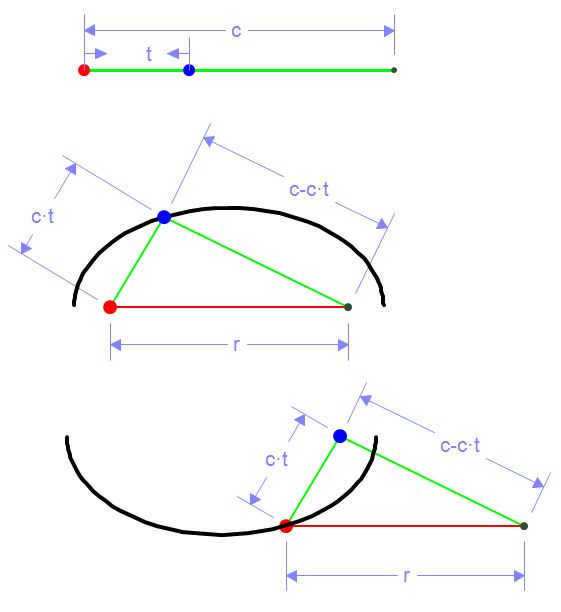
The Sun is represented by a red dot in the picture, while the Earth is depicted as a blue dot. Additionally, there is a small green dot that represents the second focus of the Earth’s elliptical orbit. The distance between the focuses is denoted as ‘r’. According to the definition of an ellipse, the sum of the green segments is always equal to a constant, which is represented by ‘c’. The coefficient ‘t’ varies between 0 and 1, and it determines the current ratio of distances from each focus. As can be observed, the trajectories of the Earth and the second focus are quite similar in shape.

Moreover, it is possible to visualize the same information in an animated format.
Now we come to the more intriguing part. Or rather, a whole assortment of fascinating parts all at once.
Initially, it is not apparent from this perspective what allegations were made against Galileo and Giordano Bruno, who was executed for something similar.
Furthermore, the query arises: well, it is understandable with the selection of an abstract point of reference, but how does it work in reality? In reality, who orbits around whom?
Let’s begin, maybe, with the second inquiry. The response is that there’s actually no “genuinely” whatsoever. There’s no chosen, “actual” frame of reference in the universe – they are all equivalent. You can gauge the position of objects relative to any other object you prefer, and any such measurement will be no more “genuine” than any other.
This principle is one of the key principles of physics: all points of reference are equal to each other.
However, they do vary in certain characteristics. And this is occasionally erroneously used to validate the “actuality” of one system compared to another.
An illustration of a second-type system is an accelerating train: when you stand on it, you begin to feel a “pull” towards the back of the train. However, it’s not actually you being pulled, but rather the train attempting to move out from beneath you. If the train suddenly reaches a constant speed, the pull will cease because you, through your grip on the floor or seat, have accelerated in relation to the ground to match the train’s speed. Now, you are traveling at the same speed as the train or, if you consider it from the train’s perspective, you are stationary.
First-type systems are referred to as “inertial,” while second-type systems are classified as “non-inertial.”
Therefore, it is often stated that “the Earth actually orbits the Sun because the system centered around the Earth is non-inertial.”
Also, check out: TOP-10: Fascinating trivia about near-Earth asteroids that will amaze your friends
However, the issue here is that the system with a reference point at the Sun’s center is also non-inertial. Moreover, even if we use a reference point at the center of mass of the Earth and the Sun (taking into account their significant difference in mass, although relatively close to the Sun’s center), there is a complication.
This is because the Earth and the Sun are not alone in their existence. They are accompanied by numerous other stars, galaxies, and most significantly, other planets of the Solar System. And the presence of this entire ensemble disrupts the picturesque beauty of the scene.
By the way, there is still one planet in the Solar System – Jupiter – which is sufficiently large that its center of mass with the Sun can be located outside of the Sun. Therefore, all the planets “orbit around the Sun” and only Jupiter is unique enough to not do so.
In this context, we can assert that the Sun is a “more inertial” system compared to the Earth: the effects of “non-inertiality” in the Sun’s system are less noticeable. This is indeed accurate. However, there are also certain cases where the effects of Earth’s non-inertiality are barely noticeable. For instance, when you are standing on the Earth and engaged in an activity. Undoubtedly, in this particular context, everything will have a much more “inertial” nature in relation to the Earth compared to the Sun.
Generally speaking, the concept of “inertiality” does not necessarily make a reference frame more or less real. Instead, it simply makes it more convenient for certain calculations.
However, this convenience only applies to specific calculations and not all of them. For instance, if we consider the Sun as the center, the trajectories of the planets become much more comprehensible, whereas if we take the center to be within the Earth, the trajectories appear rather peculiar.
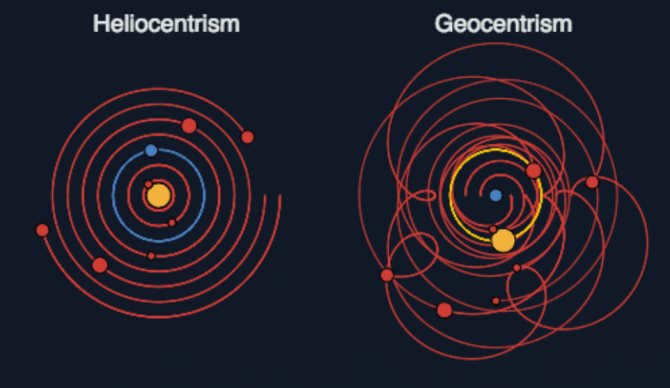
When the Sun is taken as the center, the paths of the planets become clear, but when the center is placed inside the Earth, they appear very strange.
However, the movement of the Moon seems more understandable when considered in relation to the Earth. The same applies to man-made satellites: it is much simpler to calculate their flight parameters in relation to the Earth rather than the Sun. And planning a trip to the Moon is also easier in this coordinate system.
Similarly, planning a trip to Mars, for instance, becomes easier by considering the Earth as the reference point near the Earth, Mars as the reference point near Mars, and only the intermediate part of the journey with respect to the Sun.
There is no universally convenient frame of reference, just as there is no “true” one.
But what led to the burning of Bruno and the persecution of Galileo?
Well, the reason why it wasn’t widely known at that time is because according to the prevailing beliefs in physics and religion, the Earth was considered to be the center of the universe. This idea of Earth being the chosen and “real” point of reference was deeply ingrained in people’s minds.
The perception of planets and stars was also very different back then compared to how we understand them now. It was thanks to individuals like Galileo and Bruno, who used their telescopes and logical reasoning, that the world started to shift towards a more accurate understanding of the universe.
However, while Bruno faced persecution for his metaphysical views and his support of the heliocentric system (with the Sun at the center), Galileo was specifically accused of this very same idea by the Inquisition:
As a result of acknowledging your guilt and your awareness of it, we hereby declare and find you, Galileo, guilty of heresy, based on the strong suspicion of this Holy Court. It has been proven that you hold false beliefs that go against the Holy and Divine Scriptures, specifically that the Sun is the center of the Earth’s orbit and does not move from east to west, and that the Earth is mobile and not the center of the universe.
Additionally, it must be noted that Galileo also violated the explicit prohibition on presenting these ideas, although this is not the primary concern.
The key point is that the Inquisition failed to grasp the fundamental aspect of Galileo’s insight. It is not simply that the Sun, rather than the Earth, occupies the “center of the world,” but rather that all reference frames possess equal validity. This principle is now known as Galileo’s Principle of Relativity.
Granted, this principle, in its complete form, only applies to inertial reference systems (meaning they are not only equal, but also indistinguishable from one another from within: “what happens in one will happen in the other”). Galileo did acknowledge the Sun as a “slightly more accurate center.” However, in his understanding of the structure of the universe, he advanced far beyond his detractors.
That’s the reason why those individuals who answered in such a manner, and particularly those who assessed their knowledge in this manner, aren’t truly educated, but merely have memorized the necessary phrase by heart, similar to a magical incantation.
Moreover, there’s another important detail: in the natural world, no one revolves around anyone else. The concept of “rotation” is connected to the fact that we, as humans, possess memory and are capable of recognizing that certain phenomena almost repeat themselves. By recalling the positions of planets and stars in the sky, we can calculate the “period of repetition” and, for example, represent the Earth’s path as a captivating ellipse encircling the Sun. Subsequently, by further observation, we can draw ellipses for other planets as well. We refer to this specific occurrence of repetition as “rotation”.
However, nature, in contrast to human beings, seems to have no recollection of its past. Alternatively, it does not exhibit any indication of it. Thus, is it logical to attempt to determine which entity truly revolves around the other?
Regarding lengthier observations, if we were to witness the complete orbit of Pluto around the Sun, we would have to gaze at the celestial sphere for approximately 248 years. Furthermore, it was not even detected until 1930. Moreover, it has since been demoted.











Aside from the rotation of stars and planets around the Galactic center, they also exhibit movement in other directions. Researchers have previously established that the Milky Way galaxy is undergoing expansion, although the rate is slower than anticipated. This inconsistency was uncovered via computer simulations. Astronomers have long been puzzled by this deviation, until the existence of dark matter was confirmed, preventing the disintegration of the Milky Way galaxy. However, the motion away from the center persists. In other words, the solar system not only moves in a circular orbit but also undergoes a shift in the opposite direction from the center.

The concept of magnetic fields
According to the principles of physics, it is evident that when attempting to connect two magnets with poles of the same charge, their natural response will be to repel each other. This observation forms the basis of the theory regarding magnetic fields, which posits that due to the Earth’s poles having the same charge, they exert forces in different directions, resulting in the rotation of the Earth.
Relatively recently, another scientific hypothesis has emerged, suggesting that the Earth’s magnetosphere exerts pressure on the inner core, causing it to shift in a west-to-east direction and consequently rotate faster than the rest of the planet.
Space is not empty. Cosmic dust or dark matter fills all the space surrounding stars and planets in galaxies. Clusters of cosmic dust, known as clouds and nebulae, often envelop large celestial bodies like stars and planets.

Surrounding the solar system are formations of clouds that contribute to its stability and resilience. These clouds create an elastic body effect, bolstering the system’s overall strength. Furthermore, the solar system is protected from collapse by the powerful gravitational interaction between the Sun and its planets, as well as the vast distances separating them from neighboring stars. To put this into perspective, the nearest star to the Sun, Sirius, is located approximately 10 million light-years away. Comparing this immense distance to the relatively short span between the Sun and the planets within the solar system, such as Earth at 8.6 light minutes, highlights the significantly stronger gravitational bond within our system. This distinction sets the solar system apart from other stars and reinforces its stability.
How the movement of planets occurs in the Universe
The movement of planets within the Solar System takes place in two directions: orbiting around the Sun and orbiting together with the Sun around the center of the Galaxy. All celestial bodies within this system undergo movement in two planes: along the equatorial line and around the center of the Milky Way, replicating all the motions of the Sun, including those occurring in the vertical plane. In this process, they move at an inclination of 60 degrees in relation to the center of the Galaxy. If we observe the patterns of movement of the planets and asteroids within the Solar System, their motion takes on a spiral form. The planets follow a path that trails behind and circles around the Sun. The spiral trajectory of the planets and asteroids ascends with the Sun every 30 million years and descends just as seamlessly.
Tilt of the Earth’s axis of rotation
The Earth’s axis refers to an imaginary straight line that passes through both the geographic poles and the center of our planet. This line is responsible for the Earth’s daily rotation.
Compared to the plane in which we orbit around the Sun, this line is inclined at an angle of 66°33′. This inclination is the reason behind the changes in seasons, as it leads to variations in the amount of solar heat and light received by different parts of the Earth’s surface at different times.
Approximately 12,000 years from now, it will be aimed towards the star Vega in the opposing region of the sky, and after the same duration – once more towards the star-alpha Ursa Minor.
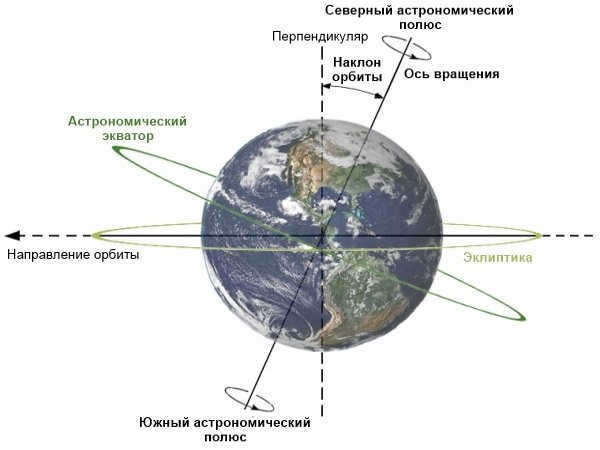
Graphical representation of the Earth’s tilt. Credit: Earth-chronicles.ru
Planetary motion within the solar system
To gain a complete understanding of the solar system’s movement within the galaxy, we must also consider the speed and orbit in which the planets revolve around the Sun. All planets move in a counterclockwise direction and also rotate counterclockwise on their own axis, except for Venus. Additionally, many planets have multiple satellites and rings. The farther a planet is from the Sun, the more elongated its orbit becomes. For instance, the dwarf planet Pluto has such an elongated orbit that it comes closer to the Sun than Uranus when it reaches perihelion. The following are the orbital velocities of the planets around the Sun:
- Mercury – 47.36 km/s;
- Venus – 35.02 km/s;
- Earth – 29.02 km/s;
- Mars – 24.13 km/s;
- Jupiter – 13.07 km/s;
- Saturn – 9.69 km/s;
- Uranus – 6.81 km/s;
- Neptune – 5.43 km/s.
The speed of the planets in the Solar System follows a clear pattern. As the distance from the sun increases, the speed decreases and the path lengthens. This results in a spiral motion, with the highest speed near the center and the lowest speed at the outskirts. Previously, Pluto was considered the outermost planet, with a speed of 4.67 km/s. However, it was later reclassified as a large asteroid – dwarf planet.

The planets of the Solar System exhibit irregular motion as they travel along their elongated orbits. The speed at which a planet moves is influenced by its position along its orbit. For instance, when a planet is at its perihelion point, it moves at a higher linear velocity compared to when it is at aphelion. The perihelion is the point farthest from the Sun on the planet’s elliptical trajectory, while the aphelion is the closest. Consequently, the velocity of the planet’s motion may experience slight variations.
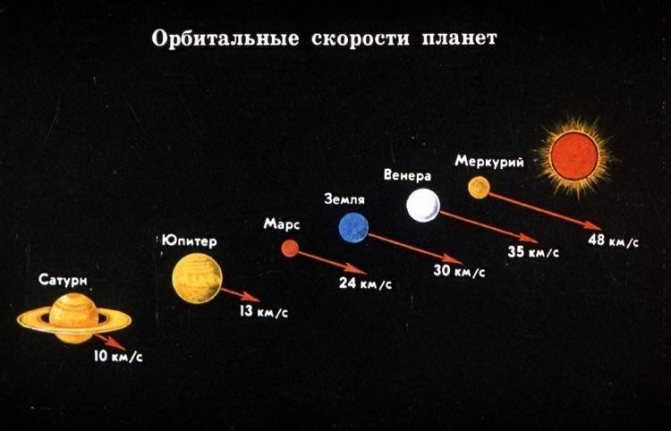

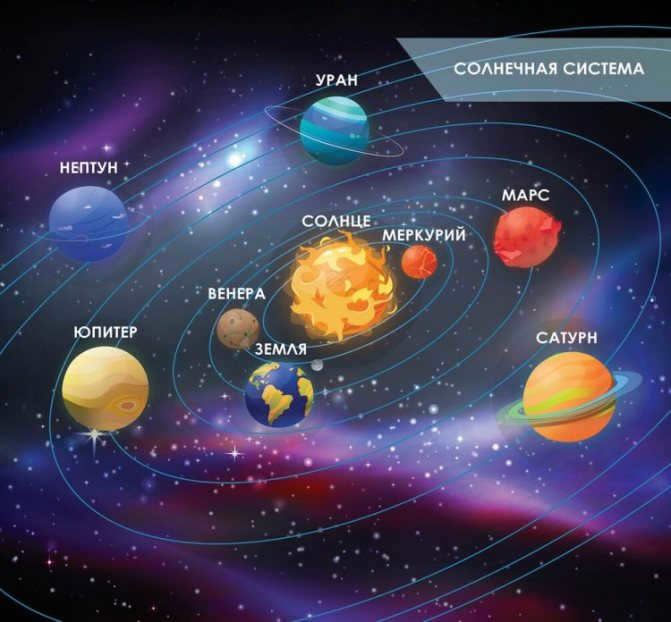
Characteristics of Solar Rotation
A star, which is primarily composed of hydrogen and helium, does not possess a uniform density like solid objects. Consequently, it does not exhibit a consistent orbital velocity like planets such as Earth. The gases comprising the star rotate at different speeds depending on their location. In the equatorial region, the rotation is relatively fast, completing a full revolution in approximately 25 (24.74) Earth days. At the poles, the rotation slows down to around 35 days. In between, the rotation rate ranges from 26 to 28 days.
Conclusion
The planet Earth is just one of countless grains of sand meandering through the vast expanse of space. However, its movement is not haphazard; rather, it adheres to specific laws dictated by the solar system’s celestial mechanics. The primary driving force behind its motion is gravity, which is influenced by two entities: the Sun, our closest star, and the center of the Galaxy, around which the entire solar system orbits. In the grand scheme of the Universe, Earth, along with other stars and planets, is hurtling towards the Andromeda Nebula at an astounding speed of 552 km/s.





